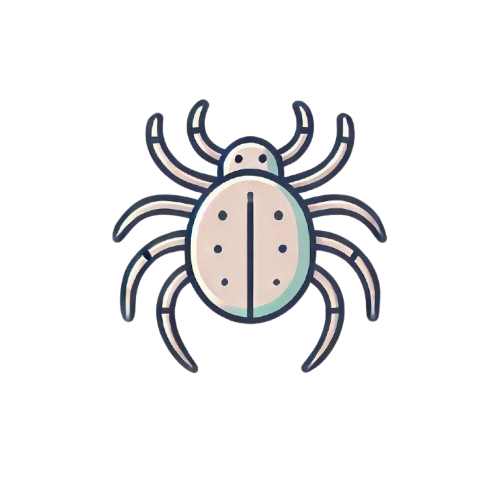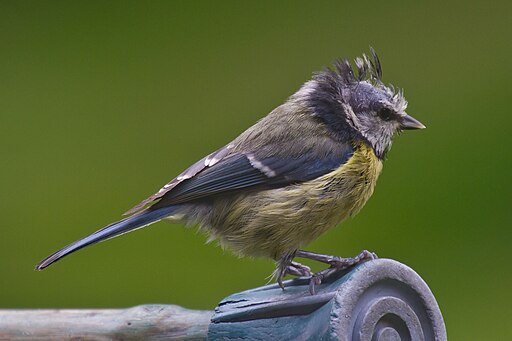Introduction
Bird mites are small but significant creatures that can affect both birds and humans.
In this article, we will explore what bird mites are, their life cycle, how they interact with their hosts, their impact on humans, and how to prevent and control them.
What Are Bird Mites?
Bird mites are tiny parasites belonging to the subclass Acari.
They are arachnids, which means they are related to spiders and ticks.
These mites are extremely small, usually less than 1 millimeter in length, making them difficult to see with the naked eye.
Despite their small size, bird mites can cause significant problems for both birds and humans.
The Life Cycle of Bird Mites
Stages of Development
Bird mites go through several stages in their life cycle:
- Egg: Female bird mites lay eggs, often in the nests of their bird hosts.
- Larva: Once the eggs hatch, the larvae emerge. At this stage, they have six legs.
- Nymph: The larvae molt into nymphs, which have eight legs and undergo several molts before becoming adults.
- Adult: Adult bird mites are ready to reproduce, continuing the cycle.
The entire life cycle of a bird mite can take as little as a week under favorable conditions, which can lead to rapid population growth.
Habitat and Behavior
Where Do Bird Mites Live?
Bird mites are commonly found in bird nests, especially those of pigeons, sparrows, and other common birds.
They thrive in warm, humid environments and are most active during the spring and summer months when birds are nesting.
Feeding Habits
Bird mites feed primarily on the blood of their bird hosts.
They are most active at night and can bite multiple times in a single feeding session.
When bird mites cannot find a bird host, they may seek alternative hosts, including humans.
Interaction with Birds
Common Bird Hosts
Bird mites infest a variety of bird species, including pigeons, sparrows, starlings, and chickens.
These birds provide the blood meals that bird mites need to survive and reproduce.
Impact on Bird Health
Heavy infestations of bird mites can cause significant health problems for birds, including:
- Anemia: Due to blood loss, birds can become anemic and weak.
- Stress: Constant irritation and biting can cause stress, leading to behavioral changes.
- Decreased Reproductive Success: Infested birds may lay fewer eggs or abandon their nests.
Bird Mites and Humans
Transmission to Humans
Bird mites can bite humans if they cannot find their usual bird hosts.
This typically occurs when bird nests are located close to human dwellings, such as in attics, eaves, or vents.
When bird mites lose their primary host, they may enter homes in search of a blood meal.
Symptoms in Humans Bird mite bites can cause:
- Itching: The most common symptom is intense itching, which can lead to scratching and skin irritation.
- Red Bumps: Bites often appear as small red bumps on the skin.
- Allergic Reactions: In some cases, people may develop allergic reactions, resulting in more severe symptoms like swelling and pain.
Prevention and Control
Preventing Infestations
To prevent bird mites from becoming a problem, consider the following steps:
- Remove Bird Nests: Regularly check for and remove bird nests near your home.
- Seal Entry Points: Ensure that windows, vents, and other potential entry points are sealed to prevent mites from entering your home.
- Maintain Cleanliness: Keep your home clean and free of dust and debris, which can attract mites.
Controlling Infestations
If you already have a bird mite infestation, there are several strategies to control it:
- Vacuuming: Regularly vacuum affected areas to remove mites and eggs.
- Washing: Wash bedding, clothing, and other fabrics in hot water to kill mites.
- Insecticides: Use insecticides specifically designed to target mites. Be sure to follow the manufacturer’s instructions for safe and effective use.
- Professional Pest Control: In severe cases, it may be necessary to seek professional pest control services to eradicate the infestation.
Recent Research and Studies
Recent research on bird mites has revealed several interesting findings:
- Resistance to Insecticides: Some studies have shown that bird mites can develop resistance to certain insecticides, making control more challenging.
- New Species: Researchers continue to discover new species of bird mites, expanding our understanding of their diversity and behavior.
- Impact on Ecosystems: Studies have highlighted the role of bird mites in various ecosystems, emphasizing their importance in the food web.
Difference between bird mites and dog mites
The primary difference between bird mites and dog mites lies in their preferred hosts and impact.
Bird mites predominantly infest birds and can occasionally bite humans, causing irritation without living or reproducing on human hosts.
They thrive in bird nests and are most active in warm, humid conditions.
On the other hand, dog mites primarily affect dogs and can cause significant skin issues, such as itching, hair loss, and infections.
While some dog mites, like sarcoptic mange mites, can temporarily affect humans (causing scabies), others, like Demodex mites, typically do not pose a risk to people and are found on the skin or in the hair follicles of dogs.
Conclusion
Summary of Key Points
Bird mites are tiny but impactful parasites that primarily affect birds but can also bite humans.
Understanding their life cycle, behavior, and impact is essential for preventing and controlling infestations.
By taking proactive measures to remove bird nests and maintain cleanliness, we can minimize the risk of bird mite infestations in our homes.
The Importance of Continued Research
Continued research on bird mites is crucial for developing effective control strategies and understanding their role in ecosystems.
As we learn more about these tiny pests, we can better protect both birds and humans from their adverse effects.


Leave a Reply